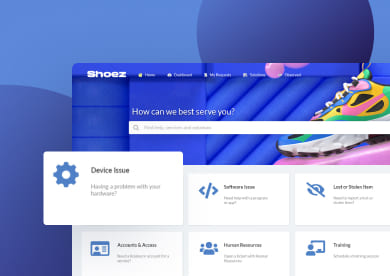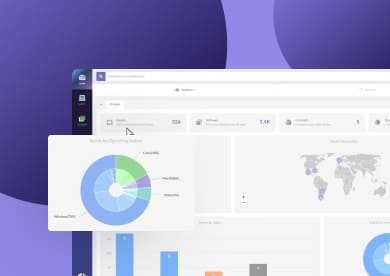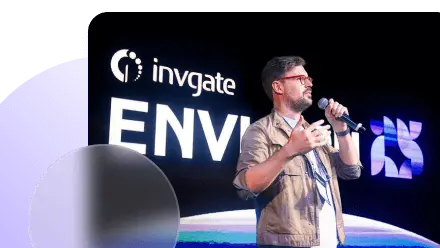Application migration is the process of moving software systems from one environment to another, often (but not always) from local servers to the cloud. It involves more than just transferring files; it requires moving all the components that keep the application running, like databases, configurations, and integrations.
In this context, IT Asset Management (ITAM) plays a key role by giving visibility into everything connected to the application. This information is essential to plan the migration properly, reduce risks, and avoid missing critical parts of the system.
What is application migration?
Application migration is the process of moving a software application from one environment to another.
Most commonly, it means moving from an on-premise setup (where the application runs on local servers) to a cloud environment like Amazon Web Services (AWS), Microsoft Azure, or Google Cloud. But it can also involve shifting between cloud providers, moving to a different platform, or upgrading the app’s architecture.
Now, when we say "application," we’re not just talking about a single file or piece of software. An application usually includes:
- The frontend — what users interact with (like a web interface or mobile app)
- The backend — services that handle the logic and processing
- A database — where all the information is stored
- Configurations and settings — like user roles, permissions, and workflows
- Integrations and dependencies — other tools or systems it connects to
- The infrastructure it runs on — physical or virtual servers, storage, and networking
Application migrations example
Let’s say your company is using an on-premise Customer Relationship Management (CRM) tool. Migrating it to the cloud would mean more than just installing it on a different server, right?
You’d need to move the user interface, the customer database, the authentication process, and any links to your email platform or ticketing system. And everything needs to work the same (or better) once it’s in the new environment.
Why is application migration important
If you don’t fully grasp what’s being moved (or how all the components connect) you can end up with broken functionality, security issues, downtime, or even data loss. That’s why knowing how application migration works is key.
While application migration can happen in different directions, today the most common scenario is moving from on-premise systems to the cloud. According to the Foundry’s 2024 Cloud Computing Study, 63% of organizations have accelerated their cloud migration efforts in the last year, and 70% now default to cloud-based services when buying or upgrading technology.
Why this shift? The main reasons include:
- Improved security and governance (34%)
- Greater scalability (33%)
- Faster adoption of emerging technologies like AI (29%)
- Replacing legacy infrastructure and improving resilience
These drivers show that application migration isn’t just about IT, it’s about staying competitive, flexible, and future-ready.
Common mistakes in application migration
Application migration is an strategic move that requires coordination, visibility, and planning. And while the goal is usually to improve performance, flexibility, or cost-efficiency, things can quickly go wrong if the migration isn’t managed properly.
Here are some of the most common mistakes organizations make when moving applications, especially during cloud application migration projects.
#1. Lack of visibility into what’s being moved
One of the biggest issues in any app migration is not knowing exactly what the application includes. A typical application is more than just code. It’s servers, databases, licenses, user access, configurations, and more. Without a clear view of all components, important pieces can be left behind.
#2. Overlooking dependencies
Applications don’t live in isolation. They often rely on other systems to work properly. This includes APIs, authentication services, or third-party tools. Migrating without mapping these connections can break functionality or create major disruptions.
#3. Migrating unused or outdated applications
Without data on usage, teams might spend time and resources migrating enterprise applications that are barely used or no longer needed. This clutters the new environment and leads to unnecessary costs.
#4. Ignoring licensing and compliance requirements
Not all software licenses are cloud-friendly. Moving an application without checking license terms can violate agreements or create unplanned expenses. A solid application migration strategy should always include a licensing review.
#5. Skipping rollback or contingency planning
Not every migration goes smoothly. When there’s no clear fallback plan, any issue can quickly escalate into a full-blown outage. A proper application migration plan should always include recovery steps just in case.
#6. Not testing enough
Sometimes teams assume that if the migration process completes, everything must be working. But failing to test the application in the new environment — including user access, performance, and data integrity — can lead to post-migration chaos.
#7. Leaving out key stakeholders
An application might serve different teams across the organization. If you don’t involve the right people in planning and testing, you risk missing critical requirements or business processes.
10 essential steps for an effective application migration strategy
A successful application migration needs a clear plan. While every organization has different tools, resources, and goals, these steps provide a solid starting point for building your own application migration plan.
Here’s a step-by-step approach you can follow.
#1. Define the migration goals
Start by clarifying why the migration is happening. Are you looking to reduce costs, modernize infrastructure, scale more easily, or replace legacy systems? Your goals will shape the entire strategy.
#2. Identify and inventory the application
Use IT Asset Management Software to map out everything the application includes: servers, databases, licenses, users, settings, and integrations. This is the foundation of your plan. If you don’t know what’s involved, you can’t migrate it properly.
#3. Map dependencies
Applications often rely on other systems and services. Document these connections so nothing breaks when you move. This is where ITAM, especially with Configuration Management Database (CMDB) capabilities becomes essential.
4. Assess licensing and compliance
Before you move anything, review your software licenses and compliance requirements. Not all software can be freely moved to a new environment, especially in regulated industries.
5. Choose the right migration approach
Based on your goals and what you’ve discovered, select the best-fit migration type: rehost, replatform, refactor, repurchase, retire, or retain. This decision will guide the next steps.
- Rehost – Move the application as-is to a new environment, typically the cloud ("lift and shift").
- Replatform – Make a few optimizations without changing the core architecture.
- Refactor – Redesign or rewrite parts of the application to take full advantage of the new environment.
- Repurchase – Replace the current application with a new solution, often a SaaS product.
- Retire – Decommission the application if it’s no longer needed or used.
- Retain – Keep the application where it is for now, and revisit the decision later.
6. Create a migration plan and timeline
Break the migration into phases. Assign responsibilities, define deadlines, and most importantly, include a rollback plan in case something goes wrong.
7. Test in a controlled environment
Before going live, test the migration in a staging or sandbox environment. Make sure functionality, data integrity, performance, and user access are all working as expected.
8. Execute and validate
Carry out the migration following your plan. After deployment, run validation tests again. Don’t assume everything works just because the transfer finished.
9. Update your ITAM system
Once the migration is complete, update your asset records and CMDB. This ensures your documentation stays accurate and supports future audits or changes.
10. Review and optimize
After everything is live, review what went well (and what didn’t). Collect feedback, resolve any lingering issues, and look for opportunities to improve performance or reduce costs in the new setup.
How InvGate Asset Management helps with application migration

A successful application migration depends on having complete visibility into your IT environment — and that’s exactly where InvGate Asset Management makes a difference. From planning to post-migration cleanup, it gives you the tools to stay in control at every stage of the process.
Here’s how it can support your application migration strategy:
#1: Asset discovery
InvGate Asset Management automatically discovers all IT assets across your organization. This includes servers, endpoints, installed applications, and other infrastructure components. It gives you a full picture of everything that’s part of the application you're migrating.
#2: Dependency mapping with CMDB
InvGate Asset Management's built-in CMDB lets you map relationships between assets, so you can understand how applications interact with databases, servers, and services. This helps you avoid disruptions during the migration by ensuring all dependencies are accounted for.
#3: Lifecycle insights and software usage tracking
Identify outdated, redundant, or underused software before migrating. With usage data in hand, you can make informed decisions about what to migrate, and what to retire. This supports cleaner transitions and lowers cloud costs.
#4: License tracking and compliance
InvGate helps you track software licenses and usage, making sure you stay compliant when moving assets between environments. It’s especially useful when migrating to the cloud, where licensing terms may differ.
#5: Smart tags and custom attributes
You can tag assets by migration status, department, environment (on-prem or cloud), or any custom category. Smart tags keep everything organized and make it easier to filter, report, and manage assets throughout the migration process.
#6: Software harvesting
After the migration, InvGate allows you to remove unused or unassigned software from the old environment. Software harvesting helps you clean up, reclaim licenses, and avoid unnecessary spending.
#7: Centralized visibility and audit readiness
All your asset and migration data is centralized in one place, making it easier to report progress, track changes, and stay ready for internal or external audits.
In conclusion
Application migration doesn't have to be overwhelming. Whether you’re heading to the cloud or reorganizing internally, having a clear plan and complete visibility is essential.
With the right approach, and the right tools like InvGate Asset Management, you can make the process smoother, smarter, and far less risky. Ready to see it in action? Start your free trial of InvGate Asset Management and simplify your next migration.















